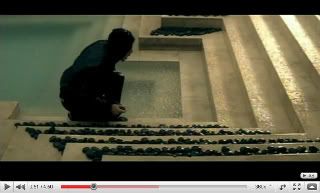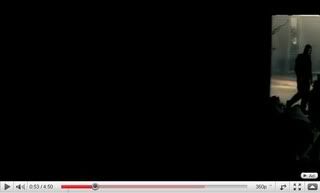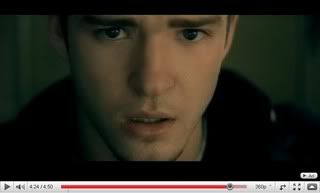- Narrative
- Editing
- Camera Movement and Framing
- Diegesis
Justin Timberlake - Cry Me A River
- Narrative
2. Editing


(an example of a jump cut, from one shot to the next)
The editing matches the lyrics/beat of the song, and there is very little continuity (which is a clear convention of music video editing). There are jump cuts quite regularly throughout at the end of a line of the song or on the beat. The editing can be referred to as 'foregrounded', where it is really obvious as oppose to the invisibility of continuity editing. Although there are some smooth transitions used, for example when he enters into her house, far more often there are jump cuts, breaking of the 30/180 degree rules, cutting against the movement, extreme jumps in time and space, and juxtaposed frames.
3. Camera, Movement and Framing


According to Vernallis, when it comes to camera framing, common conventions in music videos are extremes, for example Extreme Close Ups or Extreme Long Shots, both of which are true for Cry Me a River (extreme close ups or 'beauty' shots of Timberlake's face and master shots are cut to frequently, as pictured above). The camera also moves in time to both the lyrics and the music throughout.
4. Diegesis
Vernalli's theories about Diegesis are as follows:
- The diegesis can be revealed quite slowly
- Actions are not necessarily completed
- Characters/object movements may move to the music
- May be gaps in the audience's understanding of the diegesis - in time and space, music, performance, and narrative
- Some frames may be more important than others
- May be many repetitions


No comments:
Post a Comment